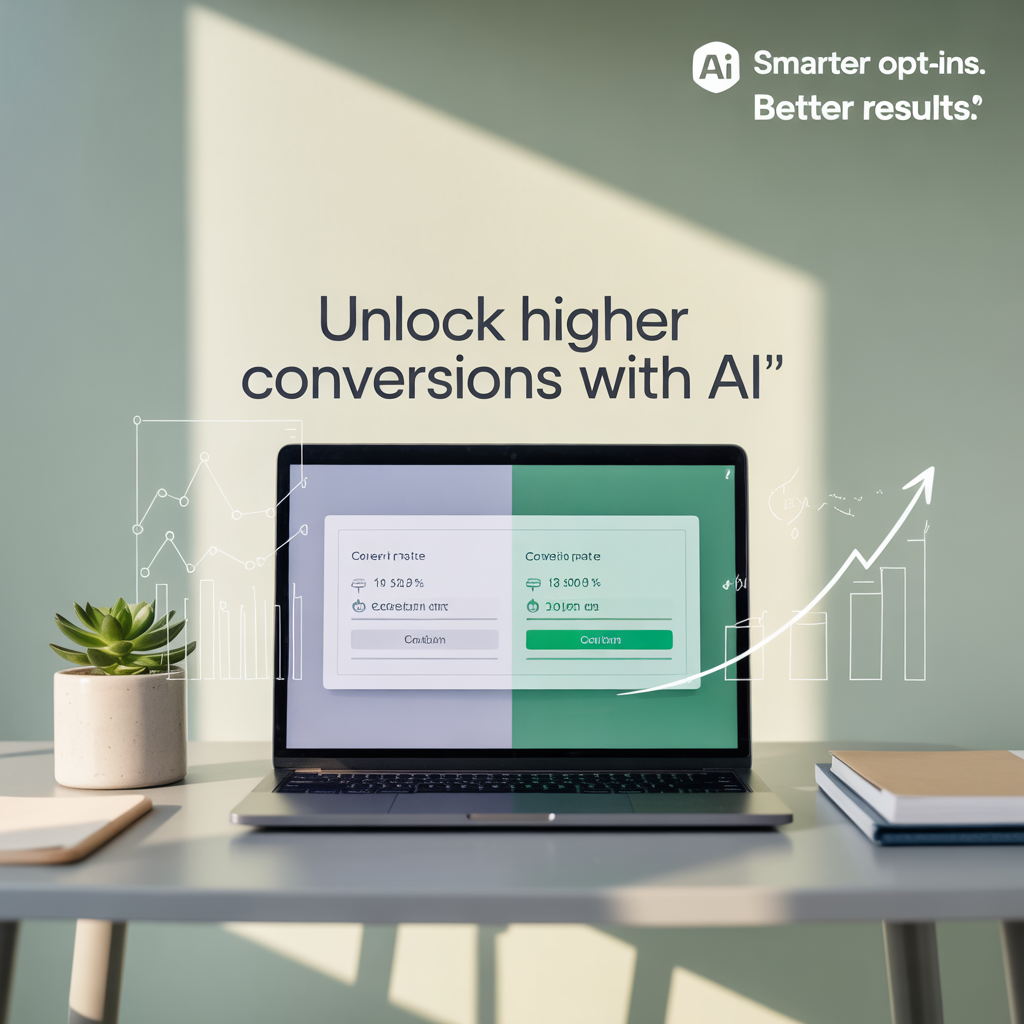Using AI to Test and Tweak Your Opt-In Pages for Higher Conversions
Most people build an opt-in page, read it over once, and hit publish. Then they stare at their list numbers and wonder why nobody’s signing up. They assume it’s traffic.
They blame the algorithm.
They convince themselves they need a bigger audience. But what AI sees is a leaky page. Not a bad offer. Not a bad idea. Just bad execution.
And instead of fixing it, you’re letting it sit there doing nothing.
You’re not testing your pages because you don’t know what to test. Or you think you need fancy software to run a split test.
Or worse, you think one version is “good enough” because a few people opted in.
But AI can analyze your opt-in page and tell you what’s falling flat. It can find what’s too vague, too long, too weak, or too confusing.
And it can give you five better versions in under a minute if you ask it the right way.
Split-testing isn’t about throwing spaghetti at the wall. It’s not just changing a button color or swapping out one word in the headline.
It’s about isolating what drives action. That might be curiosity. It might be fear of missing out. It might be the promise of a shortcut.
But if your page doesn’t create emotional tension, you can’t expect people to hand over their email address. AI knows how to build that tension.
You just have to tell it what you’re aiming for and what result you want.
Start by pasting your current opt-in page copy into a prompt and say:
“Rewrite this opt-in page to increase conversions by sharpening the offer and removing fluff. Make the hook stronger and the bullet points more outcome-driven.”
That alone will give you a tighter version of what you already wrote. But don’t stop there. Ask AI to identify what’s wrong with the page.
Prompt:
“What are the likely reasons this page isn’t converting? What objections or confusion might a reader have?”
You’ll get a list that shows you exactly where the disconnect is.
Now pick one element to test. Just one. Don’t test the headline, button, image, and bullet points all at once. You won’t know what made the difference.
AI can help you map out which elements to test first based on where the biggest friction points are.
Prompt:
“Based on this opt-in page, rank the most important elements to test for conversion improvement, and explain why.”
The headline is usually the first place to start. It’s what people see before they read anything else. If it doesn’t hook them, they bounce.
Ask AI:
“Write 10 headline variations for this opt-in page that are curiosity-driven, pain-focused, or benefit-loaded.”
Then pick two or three to split-test manually. You don’t need a fancy tool to do this. Just rotate the headlines each week and see which one pulls the highest opt-in rate.
Keep a spreadsheet. Track it like a business owner, not a content creator.
Next, test your lead magnet title. If your opt-in is called “5 Ways to Grow Your List,” that’s a throwaway. It’s soft. It sounds like every other freebie out there.
Ask AI to punch it up.
Prompt:
“Make this lead magnet title more magnetic and specific to the pain point. Give me 10 options that are bold, clear, and urgency-driven.”
You’re not looking for clever. You’re looking for clarity that sells the outcome.
Bullet points come next. Most people write features instead of benefits.
“Includes a checklist and swipe file” doesn’t mean anything to someone unless they know what problem it solves. Ask AI to rewrite each bullet as an emotional hook.
Prompt:
“Rewrite these bullet points to highlight the transformation or relief the reader will feel after getting the freebie.”
Then look at your call to action. “Sign up now” is lazy. “Grab your free download” is fine, but it’s flat. Use AI to create stronger CTAs.
Prompt:
“Give me 10 call-to-action options that feel energetic, direct, and tailored to this lead magnet.”
Then swap them in and test which one actually gets the click.
You can also test the format. If you’ve got a wall of text, AI will spot it.
Prompt:
“Review this opt-in page and suggest layout changes to make it more scannable and conversion-friendly.”
It might suggest adding spacing, breaking up paragraphs, using icons, or turning bullets into micro-headlines.
Now that you’ve got your variables, build a test schedule. Don’t just make changes randomly. Pick one version as the control and one version as the test.
Let it run long enough to get real numbers. AI can help here too.
Prompt:
“Based on 500 visitors a week, how long should I run each test to determine a winner with 90% confidence?”
You’ll get a simple plan that keeps you focused.
If you do want to use split-test software like ConvertKit, Leadpages, or Systeme, AI can walk you through it.
Prompt:
“Walk me through how to set up a split test of two opt-in pages in [platform]. Keep it beginner-friendly and include any metrics I should track.”
That alone saves you an hour of YouTube tutorials and tech stress.
Don’t forget to test offers, not just pages. AI can help you create lead magnets that meet people where they are.
Prompt:
“Give me 5 lead magnet ideas for a solopreneur who wants to build a list but feels overwhelmed and stuck.”
Use the one that feels sharpest and build your page around that.
You should also test the follow-up. Your opt-in page might not be the only issue.
If people sign up and then ghost, your thank-you page or welcome email might be the real leak.
Prompt:
“Analyze this thank-you page and first email in my sequence. Tell me how to make them reinforce the value and increase engagement.”
That’s how you plug every hole, not just the front end.
One of the best AI tricks you can use is to have it impersonate your ideal customer.
Prompt:
“Pretend you’re a solo online entrepreneur who has been burned by free offers before and is skeptical. Read this opt-in page and list every doubt or hesitation you have.”
The answers you get will sting—but they’ll show you exactly what to fix.
The real win here isn’t just a higher opt-in rate. It’s what you learn. AI forces you to think like a strategist, not a writer.
It helps you see the patterns behind what makes people act. Most solo marketers don’t take time to do that. They launch something and move on.
But the ones who stop and tweak are the ones who start pulling in subscribers consistently.
Use AI as your split-testing partner. Not just to create versions, but to give you strategy, insight, and performance logic. It won’t guess.
It’ll tell you what to test, why it matters, and how to do it smarter. That kind of input used to cost thousands from a conversion consultant.
Now you can get it in five minutes with the right prompt.
So take your opt-in page, plug it into your AI, and ask the tough questions. What’s wrong with this? What could be stronger? What’s missing that would make someone say yes right now?
Then fix it. Run the test. Track the numbers. Repeat.
Eventually, you’ll stop guessing.
You’ll know exactly what makes your audience convert—and you’ll never waste another month wondering why your list is stuck at 187 people.
AI will help you change that. But only if you stop settling for “good enough” and start asking for better.









0 Comments